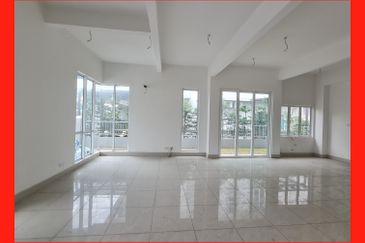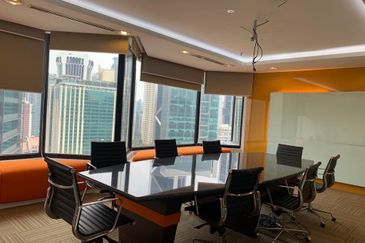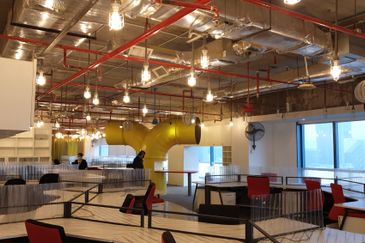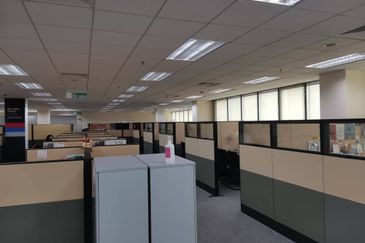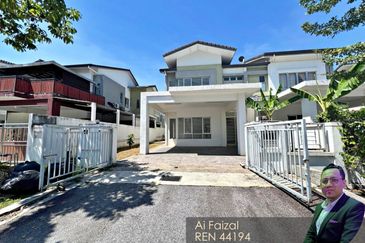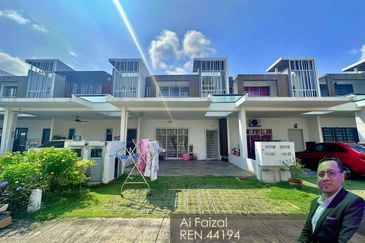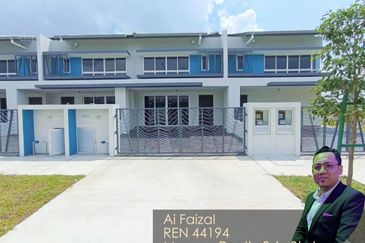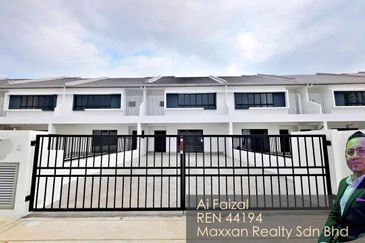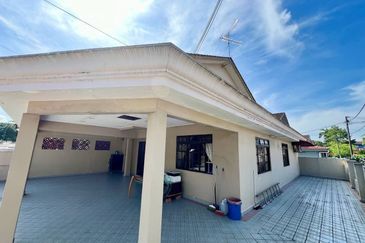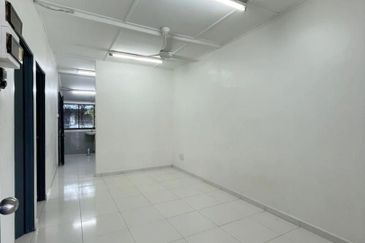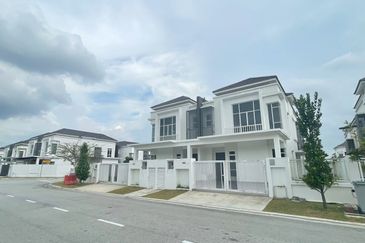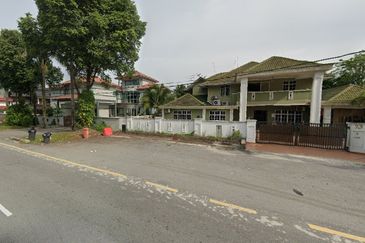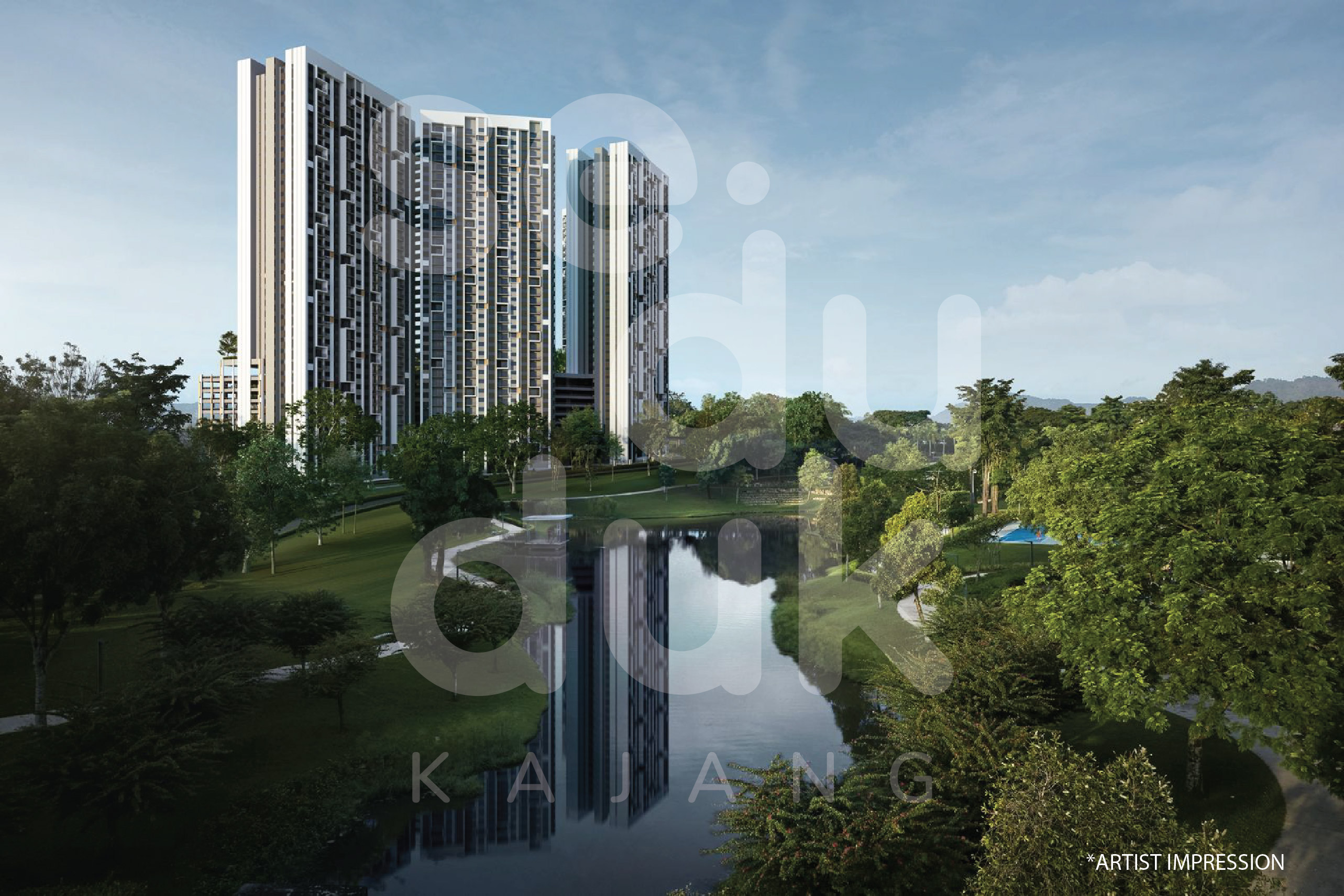Lower interest rates on housing loans, very attractive packages from property developers and more “realistic” property prices are calling out to consumers... but is it a good time to buy? And if so, where, and what type of property?
Addressing these questions were Eric Ooi, managing director, Knight Frank Malaysia; property investor Kam Wei Tsung; and Stephen Tew, a managing partner in Hectares & Stratas in a panel discussion on “Property investment strategy in a recession with hyperinflation — where should you put your money?” at The Edge Investment Forum on Real Estate 2009 themed “Residential property values: How low can we go?”
All three speakers, armed with years of experience and achievements in the field of property investment, were generally optimistic about the property market. Ooi said there was some indication that the current  “wait-and-see attitude” by potential investors and homebuyers may end soon, while Tew saw adversity in diversity when he announced to the audience to “get ready to get rich!”
“wait-and-see attitude” by potential investors and homebuyers may end soon, while Tew saw adversity in diversity when he announced to the audience to “get ready to get rich!”
First to take the rostrum was Kam who believes investing in properties is still a good hedge against inflation in the long run as long as the properties are located in choice areas where there are limited units.
“You can expect fantastic leverage. Property in good locations is scarce. Properties in Jalan Bukit Bintang, for example, are much sought-after. You have to make offers if you are interested in acquiring them. Once you have made your decision to invest in the right property, it could be a money-making machine,” said Kam, who is director of Platinum Property Ventures Sdn Bhd.
Kam has invested in 24 residential properties and RM8.3 million worth of commercial properties in just three years. Speaking from his personal experience when investing during a recession, he said one strategy is to buy below market value from distressed or motivated sellers.

“For example, if the market value of a 2-storey link house in Bandar Utama is currently RM550,000 and I manage to purchase this property at RM480,000, I would have bought it at below market value and have an equity build-up of RM70,000 immediately without waiting two to three years for appreciation. Your profits are made when you buy right, that is, when buying below market rate,” he said.
Another strategy is to look at properties that give positive cash flow. “The property has to generate positive cash flow from day one. I will normally invest in the secondary market where transactions can be completed within three to four months,” said Kam.
Positive cash flow from rents is the balance after repayment to the bank as well as the maintenance and service charges per month. Kam said there is no point investing in property and getting negative cash flow as it means having to top up for the bank loan.
It is important to identify reasons for buying a property — whether it is to buy-to-sell for profit (short-term gain) or buy-to-keep. “A friend bought a landed property in SS2, Petaling Jaya, for RM80,000, in 1968 and sold it for RM240,000 three years later. Profit was definitely made but the same property today is valued at RM4 million,” said Kam.
Buy-to-keep is where long-term wealth is created by renting out the properties for positive cash flow. The portfolio is held through the ups and downs of the property market cycle for long-term rewards. Buy-to-sell, on the other hand, is where one manages to acquire a property at, say, 25% below market price and reselling it within 8 to 12 months to reap capital appreciation, which is then used as seed money to reinvest in the buy-to-keep portfolio.
Kam does not expect any fire sale as housing demand still exists. Besides, appreciation of property prices in the country has been conservative compared with countries such as Singapore and Hong Kong.
On where to invest, he cited downtown Kuala Lumpur such as the Golden Triangle (including Jalan Imbi and Jalan Pudu), Kota Damansara and the Puchong corridor (located along highways) that are easily accessible.
The downside of properties is that they are illiquid and a liability when not rented. If a property is difficult to rent, owners should consider offering cheaper rent to have cash flow rather than leave it idle, especially during difficult times, said Kam.
“During a recession, it is important to be able to find a replacement tenant quickly, to minimise your outlay in repayment of mortgages and maintenance fees,” he said. There is a need to target your market carefully, whether they are expatriates, factory workers, students, young couples, professionals and others. Kam’s advice: Study the needs of each target market and be comfortable with the chosen target market before investing.
He identified five immediate steps to take for investing in properties:
• Develop a game plan;
• Identify a target market;
• Identify a target area;
• Guard your CCRIS (central credit reference information system); and
• Build your team/consortium.
High-end condos
Knight Frank Malaysia’s Ooi, whose presentation was focused on the outlook for high-end condos in the Klang Valley, said property prices have declined by 10% to 20% from peak prices, more so in the Kuala Lumpur City Centre (KLCC) than in the suburbs. Looking at the current economic environment and impending supply, prices will continue to soften in the short term, he said.
However, he added: “It is a good time to prospect and buy properties in the next six months, especially when borrowing costs are currently very low. The good news is perhaps it is the end of the wait-and-see period as buyers are starting to commit to purchases.”
In predicting demand, Ooi said real demand could only be known when new units are completed and when investors/speculators start to let or sell their properties. “Sales rate does not represent real occupational demand as buyers can be owner-occupiers, investors or even speculators. Furthermore, condos are sold before they are built,” he said. Predicting rental demand accurately for KLCC condos is a challenge, as there is a lack of data on expatriates who were tenants for the condos, he added.
There are more buyers who are owner-occupiers in the suburbs than in the KLCC area. “This year is a critical one as a high number of units will be completed in the KLCC area, and a majority will be up for rent, making it a very competitive market, given our current market conditions,” said Ooi.
High-end condominiums form just 5% of the total number of properties in Kuala Lumpur. Knight Frank classifies them into two categories: high-end and luxurious condominiums. High-end condominiums are those fetching RM600 to RM1,000 psf and luxurious units are those above RM1,000 psf. According to Ooi, there are 24 high-end developments comprising 3,460 units in the city centre. This year, another 1,620 units will be completed. “Many of these units are probably coming at a wrong time,” he added. The number of units expected to be completed in 2010 and 2011 are lower, at 540 and 980 respectively, he said.
As for luxurious properties, six projects comprising 1,100 units will be completed this year, adding to the existing 290. Future supply offers 230 units in 2010 and 120 in 2011.
High-end condominiums in the suburbs (up to RM1,000 psf) are mainly properties in Mont’Kiara and Damansara Heights. This year alone, 1,940 units will be completed, followed by 2,100 and 1,150 units in 2010 and 2011 respectively. Most of the high-end condominiums are in Mont’Kiara.
On average, Ooi said property prices in the KLCC area have doubled over the last five years, while prices of properties in the suburbs, such as Bangsar and Mont’Kiara, have generally increased by 50% from 2003 to 2008. However, rents in general have not kept up with the increase in prices, resulting in lower yields. “Where we used to enjoy yields of about 8% to 10% in the suburbs, we can now expect 6%,” he said of the current slowdown.
Industrial properties
Hectares & Stratas’ Tew, who has over 25 years’ experience in industrial and commercial property investing, said that despite the current financial crisis, interest rates have never been lower while yields are holding steady.
Tew, who has invested in 37 properties in the last 20 years (out of which, 90% are industrial and commercial properties) said it is more important to learn how to sell. “Buying (properties) is easy but it is even more important to ‘flip the deal’,” he added. He is also a founding shareholder/director of Axis REIT Manager Bhd.
He said industrial properties are good investments, as yields are about 8% to 10% per annum and tenants are substantial. Besides, industrial property in good locations are scarce. “When you talk about industrial properties, tenants tend to be very substantial and so, the quantum of rent can be big. For example, RM100,000 rent per month is acceptable, but we also have tenants (within Axis REIT) who are paying us RM200,000 to RM600,000 rent a month,” he said. Occupancy for industrial properties is traditionally very high, at about 95%, he added.
Tew said industries go for longer-term tenancy and are more rational than residential tenants. “Companies tend to invest heavily in a factory and that involves a high capital expenditure, so they are unlikely to relocate after only three years. There is no sentimental value but more of a rational value — does it make sense to shift or is it going to burn them if they (the tenants) shift? There is no housewife decision-making involved here. Everything is dollars and cents,” he said, citing the case of a tenant that has been renting for 25 years while some Japanese companies have been tenants for 10 to15 years.
Tew said good locations for factories are scarce, particularly in Petaling Jaya. Those targeting domestic tenants can look at northern Kuala Lumpur, such as Kepong, Selayang and Batu Caves, and southern Kuala Lumpur towards Nilai, including Sungai Besi, Bandar Tun Razak and Cheras.
Petaling Jaya, Subang Jaya, Shah Alam, and areas around Klang and Port Klang would be good locations if an investor targets multinational corporations (MNCs) as tenants. “MNCs normally are not very keen to own a property and tend to be long-term tenants. They have factories all over the world and if they have to own all their factories, they might as well get into real estate” said Tew.
According to Tew, the last big industrial development was in 1992 by developer Gamuda Bhd in Kota Kemuning and there has not been such a large-scale industrial park built since, aside from small, scattered ones. “Development of industrial buildings is a very specialised area. Residential developers generally do not do a good job building industrial developments, and vice versa. Therefore, there aren’t many developers that build industrial buildings, so supply is limited. It is important to find out whom you are buying from,” he said.
He does not recommend terraced factories due to space constraints. “Manufacturers and logistics companies need space and open storage; containers need a place to park,” he explained.
When asked by a participant on the minimal entry level for those interested to invest in industrial properties, Tew said: “The lowest entry level is a terraced factory which would cost about RM400,000 to RM500,000 in a reasonable location. I usually do not recommend terraced factories due to space constraints — no space to park and no open storage in the compound — but if you have to, then buy a corner lot. If you have to pay an arm and a leg, still buy a corner lot which may cost about RM900,000.”
Good areas for property investment, he said, would include those with good exposure, are easily accessible and have the “right” population. Right population is where the population is young as they are willing to spend money. “After all, real estate is about people. Locations in city centre are also important if you want to target the tourist market,” he added.
For commercial property, Tew recommended shophouses. To a question from the floor on the reason for favouring shophouses, he said: “When you own the whole title, you are the boss because you control the property. An example is in Subang Jaya where, along a row of originally 3-storey shophouses, there is a corner shophouse that has been converted into a 7 or 8-storey hotel. The owner did not need to buy land, just add floors.”
He said investors should look at the retail value of shophouses compared to office values. “Retail value is very much sought-after. And if you are buying a shophouse of more than 4-storeys, make sure there is a lift. If not, do not buy it unless you are going for housing for students,” said Tew. Commercial properties have fair yields at about 6.5% to 7.5% per annum, and tenures tend to be reasonably long. “Tenancy for at least three years should not be an issue. Strong locations, such as SS2 in Petaling Jaya, Bukit Bintang, Mid Valley in Kuala Lumpur and Taipan in Subang Jaya, are scarce,” he added.
What should one avoid?
“It’s not a good time to invest in vacant industrial land right now. Strata retail, such as Sungai Wang Plaza in Jalan Bukit Bintang, is doing well. Other examples of strata retail are Summit USJ (Subang Jaya), Plaza Phoenix (Cheras), Pertama Complex (Kuala Lumpur) and Campbell Complex (Kuala Lumpur). Look at them and decide if they are doing well. For retail to be successful, it is all about having good managers for these properties,” said Tew.
This article appeared in City & Country, the property pullout of The Edge Malaysia, Issue 750, April 13-19, 2009.
TOP PICKS BY EDGEPROP
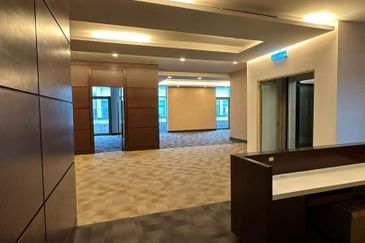
Damansara Heights
Damansara Heights, Kuala Lumpur

Taman Bukit Indah @ Iskandar Puteri
Johor Bahru, Johor
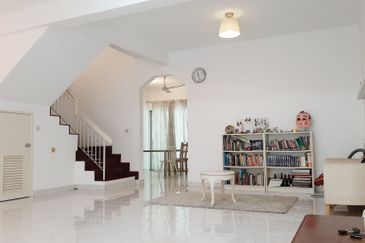
Seksyen 5, Kota Damansara
Kota Damansara, Selangor

